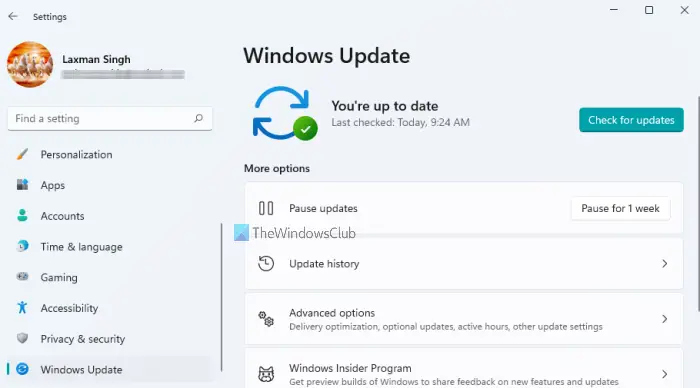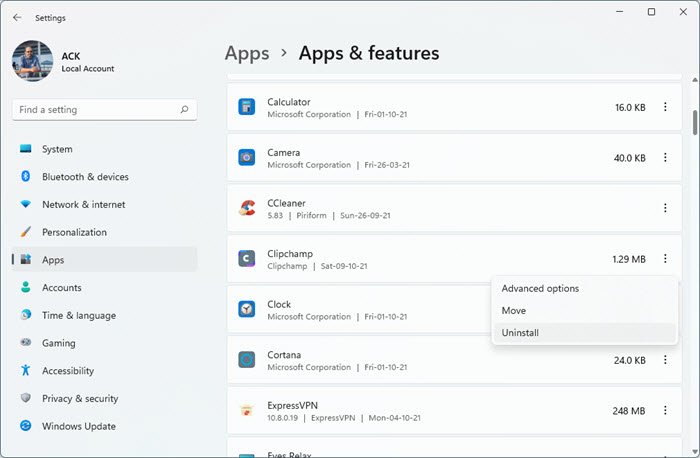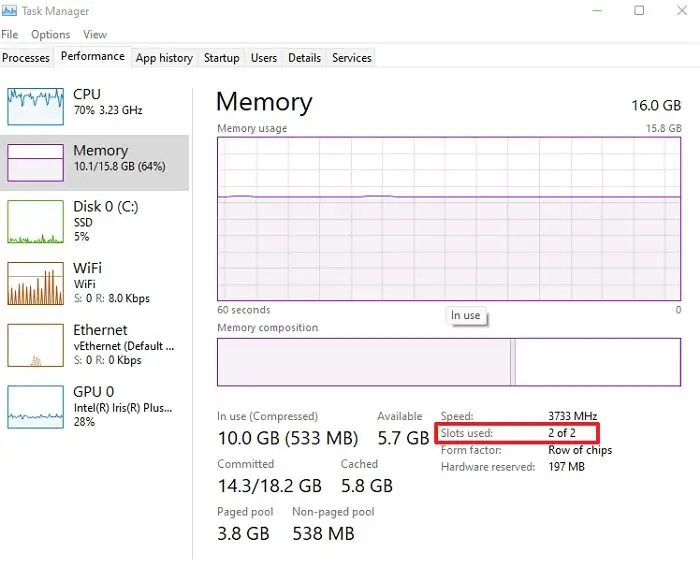You may notice your Windows 11 system is taking a performance hit, which could potentially lead to a crash, freezing, or not responding issues. This is primarily due to the computer running high on memory usage in some cases. In this post, we will offer ways PC users can free up, reduce, or limit RAM usage on their devices.

How to Free up, Reduce or Limit RAM usage in Windows 11
Windows 11 ships with many new features and improvements compared to earlier versions of Windows, of which most, if not all, are heavy on system resources. Probably the reason why Microsoft is encouraging Windows 11 installation on supported hardware only, although PC users can install Windows 11 on unsupported hardware. Some PC users may experience high memory usage while running Windows 11 on supported or unsupported hardware with the required minimum specifications.
Now, in some quarters, there are suggestions to disable these new features, but in our opinion, that seems to defeat the purpose of PC users taking advantage of all the bells and whistles that come with a modern OS—otherwise, why upgrade to Windows 11 or newer? The idea is to improve your workflow, gaming experience, or whatever task you choose with the modern OS and achieve more.
Read: Microsoft Edge High Memory Usage
Some of the new features suggested for users to disable includes Microsoft Teams and the Widgets Board, both icons are pinned to the taskbar alongside all the usual options, such as the Start menu and Task View. Widgets and Microsoft Teams chat launch Microsoft Edge WebView2 processes in the background. This process is necessary for web-based apps like Teams or Widgets in Windows 11, but unfortunately, in some cases, these processes are resource-intensive. The WebView2 processes are triggered when you click the Widgets Board icon and browse through the feed. Whereas the Teams chat icon uses system resources whether in use or not, as the icon is pinned to the taskbar, it triggers web-related activities in the background once a user signs in to Windows 11.
Read: Fix msedgewebview2.exe High CPU and Memory usage
So, for those who don’t use these new features daily and want to reduce RAM usage on their device and improve performance, you can simply right-click on both and unpin the icons. This will prevent WebView2 processes from being triggered on startup in the case of Teams. However, you may not notice any significant improvement in your daily usage. Still, it will help to curtail how many concurrent WebView2 processes will be running in the background as you launch more apps or web apps on your device.
For a much better and ideal memory usage management without stripping or disabling new features of Windows 11 on your device, you can try the following suggestions:
- Restart PC
- Make sure Apps and Windows 11 is always up-to-date
- Run malware scan
- Clear Memory cache
- Uninstall or Disable unused apps
- Use Portable or install lighter versions of app OR alternatives
- Enable ReadyBoost
- Run Windows Memory Diagnostic Tool
- Upgrade or install additional RAM.
1] Restart PC
We start off with the obvious: As soon as you notice memory spikes while running Windows 11 on your device, you can give your PC a quick restart to completely clear the contents of RAM and restart all running processes, including those you are not aware are running. You should periodically restart your PC to perform this memory cleanup and also when your PC feels sluggish and you haven’t restarted the device in a while.
Read: Why does restarting your Windows PC fix so many problems?
2] Make sure Apps and Windows 11 is always up-to-date

Operating system bugs are known to be voracious system resource hogs. So, it’s recommended for PC users to always ensure that the Windows 11 OS is updated as and when due based on the Windows Update Servicing Cadence. In the same vein, you should always make sure installed apps are updated in a timely manner, and not just for security reasons, as the latest versions of apps can include optimization and improvements such that the app when in use, consumes less RAM in general. An updated app may include a fix for any memory leak issues the app might be having.
3] Run malware scan
In some cases, if your PC is infected by a virus/malware, you’re likely to experience high memory usage. So, make sure the security software installed on your device is fully updated and then manually run a full malware scan to disinfect and get rid of potential rogue software and services or processes consuming memory.
Read: Why is my RAM usage so high when nothing is running?
4] Clear Memory cache
Normally, more memory will be consumed if you have more apps running on your system. Keep in mind that some apps, when launched, trigger multiple processes—and each of these processes takes up memory. So, when not in use, closing the apps may help, but at times, the app still does not release the memory allocated to the process. In this case, clearing the Memory cache and freeing the RAM resources is necessary, which can then be allocated to other processes.
Read: High Disk & Memory Usage when playing Games on PC
5] Uninstall or Disable unused apps

One of the ways to reduce RAM usage is to prevent programs you never use anyway from consuming it. If you have apps you haven’t opened and used in months but still run in the background are potentially consuming memory resources. In this case, you can uninstall those apps. If you don’t want to uninstall an app because you use it sometimes, you can stop the app from opening or running at startup because most apps are set to automatically run every time you log in, which is unnecessary if you rarely use them.
In addition, check and disable browser extensions you don’t use. This is necessary as every extension you add to your browser consumes extra memory, so removing unused extensions is an easy way to reduce RAM usage further on your device.
Read: How to check which app is using more RAM in Windows
6] Use Portable or install lighter versions of app OR alternatives
You may want to clear RAM on your computer, but the apps hogging memory resources are necessary to your workflow. In this scenario, you can try using lighter versions of the app (if available) or the Portable app versions, if available. Alternatively, you can use try using lighter app alternatives when you can. For example, you can try using a smaller app like Paint.NET or GIMP for minor edits and only use Photoshop when you’re fully dedicated to working on a project.
Read: How to reduce Chrome memory usage & make it use less memory
7] Enable ReadyBoost
If the computer you’re running Windows 11 on is old and has less RAM, you can use ReadyBoost. However, this feature is of limited use today because if your computer has an SSD, ReadyBoost won’t make any improvements performance-wise. This is because an SSD is faster than a flash drive, so the paging file is more efficient than using the USB drive as RAM. Moreover, PCs ship with more RAM by default, so there won’t be any noticeable gain compared to an old machine with an HDD installed.
8] Run Windows Memory Diagnostic Tool
Run the Windows Memory Diagnostic Tool. This tool can be used to check for possible memory problems, including testing your computer’s Random Access Memory (RAM). It helps you figure out bad memory and memory issues and usually takes 20 minutes to complete.
9] Upgrade or install additional RAM

We leave this as the last option as this does involve some cost; but adding RAM will surely improve performance, especially if you’re always running low on RAM or want to run more programs simultaneously. You may also require the services of a hardware technician, although adding RAM on a desktop is fairly easy compared to a laptop with a confined space. In any case, you’ll need to check for free Memory slots and make sure you purchase RAM compatible with your system. You can refer to your PC manufacturer’s documentation or search online.
Read: The biggest Myths about RAM that many people have
I hope you find this post informative and helpful!
Related post: How to Check, Lower or Increase CPU usage in Windows
How do I make Windows 11 use less RAM?
To make Windows 11 use less RAM, try the following suggestions:
- End all unnecessary apps and services
- Disable the unnecessary Startup apps
- Defragment your Hard Drive
- Disable SysMain Service
- Adjust for best Performance
Why is my RAM usage so high?
All computer memory is connected to the CPU and RAM. However, the high memory usage problem is mainly due to the overcrowding of many internal processes. A general fix for this issue is to open Task Manager and check for and stop the running unnecessary programs and applications.
How much RAM usage is normal?
Generally, 4GB is starting to become “not enough,” while 8GB is fine for most general-use PCs (with high-end gaming and workstation PCs going up to 16GB or more). And what percentage of RAM is considered normal? For a computer running on Windows, the average usage of 15-30% is expected at idle. This percentage is due to the reserved memory of the OS, its drivers, and different applications, along with the cached data.
Read: Free Memory Optimizers & Cleaners for Windows PC
Is Windows 11 RAM hungry?
It will not be completely unusable if you have a 4GB system with Windows 11 installed. But you will notice that at least 3 GB of RAM is being used by system processes, or 70-80 percent of RAM is being used without any programs.
Leave a Reply